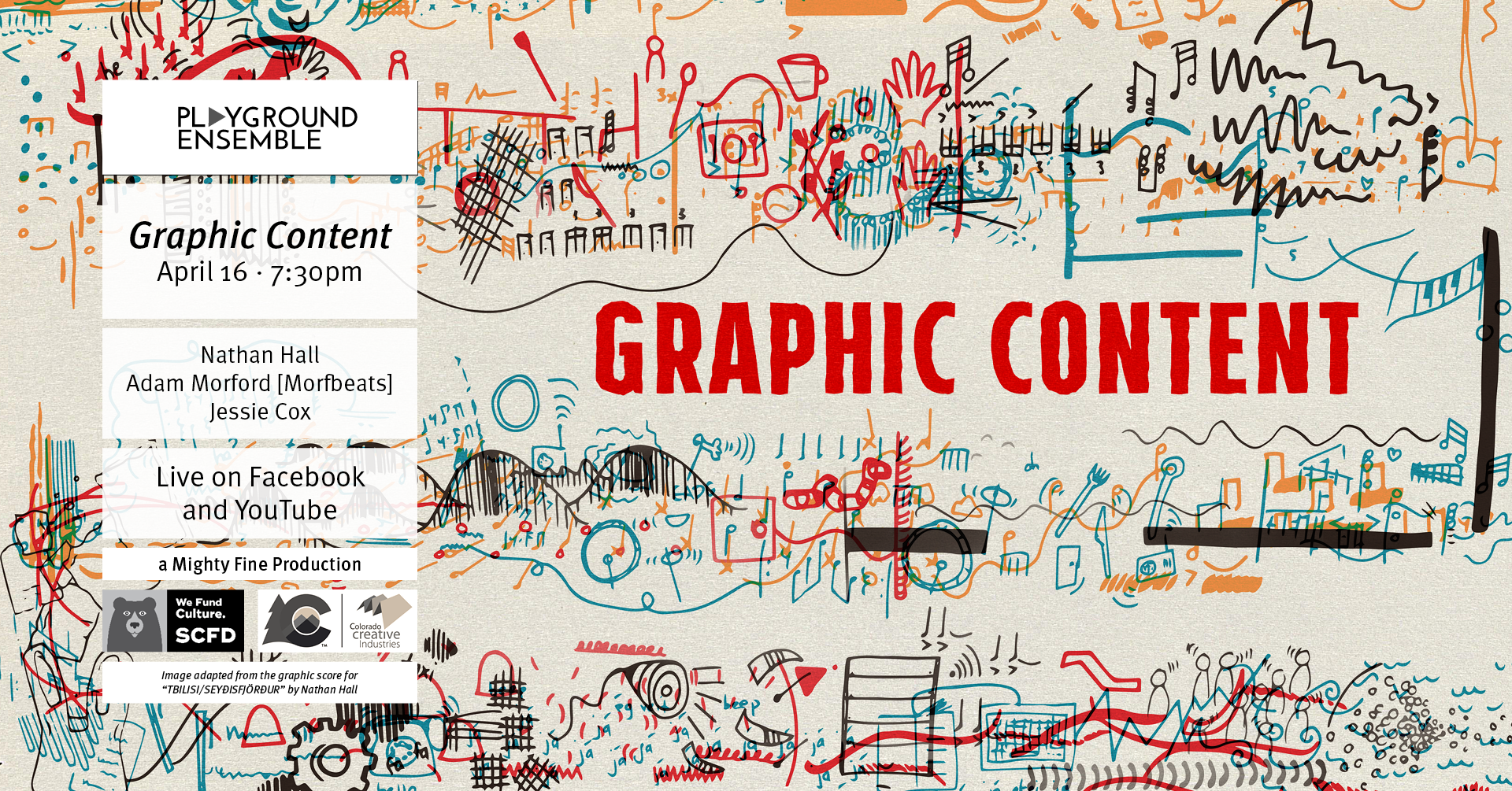In Western culture, we're accustomed to thinking of a musical score as a page of notes, rests, and measures. But not all composers and music-makers use historical notation to get their ideas across. Graphic scores have been used by musicians for decades to allow for new creative restrictions and sonic inspiration. Playground's latest show 'Graphic Content' features three composers who do just this.
Jessie Cox hand-calligraphies scores amidst poetry and computer code to talk about technology, identity, and the universe. Nathan Hall draws from the topography of East Iceland to guide performers in creating sonic landscapes. And Adam Morford (Morfbeats) combines his graphic scores with hand-forged original instruments to create a mind-bending visual and sonic world all his own.
THE PROGRAM
The Adventures of Easy Izzy by Adam Morford
Easy Izzy is a piece of music originally written on the synclavier by Adam Morford. The Adventures of Easy Izzy is an expansion of the original piece, using that music and graphic scores, as the foundation and jumping-off point for creative explorations.
Selected movements from Black as a Hack for Cyborgification by Jessie Cox
Sun
Earth
Jupiter/Saturn
This piece is comprised of different scores, which only use one page each. Each one of those one-page scores represents a different space or sonic environment. They are labeled after planets, the sun, and a star. When the musicians visit one of these spaces—i.e. play one of these one-page scores—they create sounds from interpreting the musical notation on the page. This reading includes processes of translation since the scores are made using notation for a great variety of instruments. Furthermore, they border on graphic notation.
The effect of this musical system is that the musicians travel from one planet to another. Each planet has a unique sound. Through the aid of the musicians, the listener can then as an effect also travel across different spaces.
Reading the Landscape by Nathan Hall
Composed on residency at Skaftfell Art Center, Seyðisfjörður, East Iceland, about the landscape and history of this area.
Tvísöng : solo piano introduction inspired by the centuries-old tradition of Icelandic “two-voice” singing.
Ritsími/Telegraph : Seyðisfjörður was the first town to get messages from Europe via telegraph. This trio maps out signals and communications.
Bjölfur : A well-loved mountain with striations and small waterfalls running down its sides.
Wall Ruin : An old stone ruin stands crumbling in the fjörd. I imagined the rocks of this old building having voices. What would they say?
Heiði Dots Quartet : Heiði means ‘heath’ in Icelandic and this large hill is usually covered in snow. The notes of this quartet poke out like the rocks that manage to poke out amidst the snow.
Stöðvarfjörður Cliffs : Duet in three sections inspired by the striations of the steep mountains framing a tiny town.
Grasses: An interpretation of the movement of the long grasses as they moved in the wind outside my apartment.

